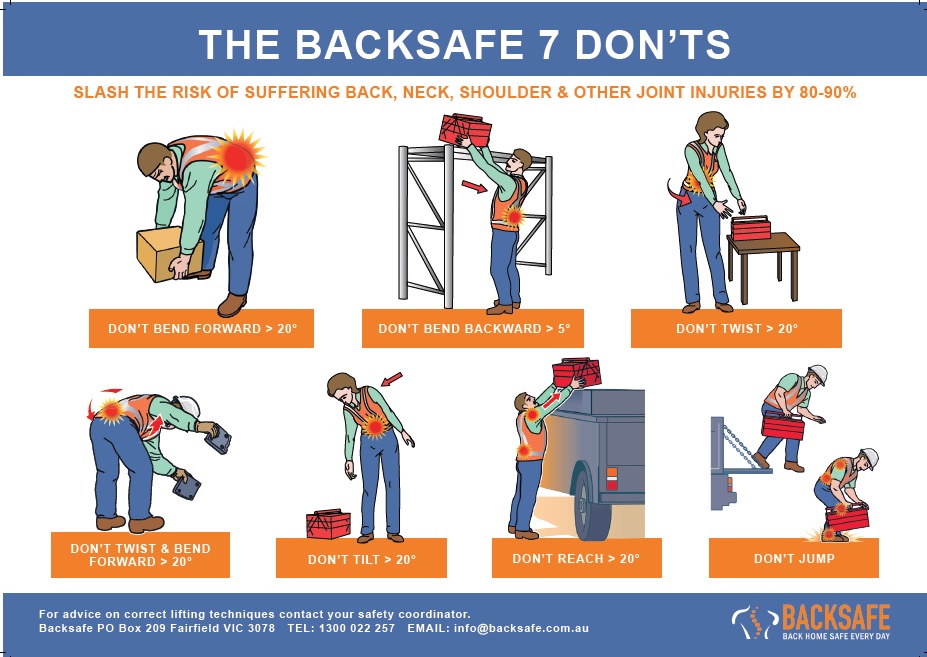Under the Occupational Health and Safety Acts of our various states/territories, employers must provide and maintain, a working environment for their employees that is safe and without risks to health.
Employers have a number of specific duties under the Occupational Health and Safety Regulations (OHS Regulations) to manage risks associated with hazardous manual handing in the workplace, including the duty to identify hazardous manual handling, control any associated risk of musculoskeletal disorders (MSD).
The OHS Regulations require an employer to review, and if necessary, revise any measures implemented to control risks in the following circumstances:
- before any alteration is made to anything, process or systems of work involving hazardous manual handling, including a change in the place where that work is undertaken
- if new or additional information about hazardous manual handling becomes available to employer
- if there is a report of an occurrence of an MSD by or on behalf of an employee
- if for any reason the current risk control measures do not adequately control the risk
- after receiving a request from an HSR (Health Safety Representative)
- after a notifiable incident (as defined in the OHS Act) that involves hazardous manual handling
This means that there is a requirement under the OHS Regulations for employers to complete a review and, if necessary, revise any risk control measures, after reports of patient handling injuries that involve the occurrence of an MSD. Employers also have a duty to consult with employees and HSRs on matters related to health or safety that directly affect or are likely to directly affect them. This includes consultation on identifying hazards or risks, and decisions about how to control risks associated with patient handling injuries. Further references are shown below.
State and Territory Occupational Health and Safety Acts
The OHS Acts set out general duties of care for employers, employees, designers, manufacturers, suppliers and installers. The OHS Acts enable Regulations and Compliance Codes of Practice to be made about the health, safety, and welfare of people at work.
Occupational Health and Safety Regulations and Compliance Codes of Practice
The Regulations set out specific duties for employers and employees under the various WHS Acts. Compliance Codes of Practice give practical guidance on how to apply and comply with the legislation.
Transferring people safely handbook 2009 – by Worksafe Victoria
A handbook for handling patients, residents/clients in healthcare, aged care, rehabilitation disability services is a complete reference full of must apply guidelines. Also see A guide to designing workplaces for safer handling of people – Worksafe Victoria
This document assists health, aged care, rehabilitation and disability facilities to reduce risks to those who handle patients/clients.
Existing and historic industry guidelines and industry policies on ‘No lifting’, for example, Australian Nursing Federation (Vic Branch), No Lifting Policy, 2006, state that manual lifting of people should be eliminated except in life threatening or emergency situations. Patients are encouraged to assist in their own transfers in as many cases as possible to not only assist carers and to reduce their risk of injury but also to assist the injured or infirmed or old to remain as fit and as strong as possible for as long as possible.
At all times mechanical patient and equipment handling aids must be used whenever they can help to reduce risk. It is never an excuse to say that going to get the mechanical lifting or moving machine will take too long or will take too long to set up. We must always consider the wellbeing of the carer and when a lifting or moving machine is available then we must use it.
To find out how we can support your training efforts call Peter Broadbent 0414 460 859.




